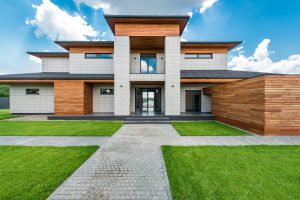Comprehensive Insights into Sustainable Housing Solutions
Sustainable housing has become a hot topic in recent years, as the world grapples with the effects of climate change and the need for more environmentally-friendly living solutions. But what exactly does sustainable housing entail, and how can we achieve it? In this comprehensive article, we will dive into the concept of sustainable housing and explore various solutions that can help us create a more sustainable future for our homes and communities.
The Need for Sustainable Housing
With the ongoing climate crisis, it has become evident that our current housing practices are not sustainable in the long run. According to the United Nations, buildings and construction account for 39% of energy-related carbon dioxide emissions globally. This staggering number calls for drastic changes in how we approach housing and construction.
Moreover, the rapid population growth and urbanization have put immense pressure on the environment, leading to widespread deforestation, air pollution, and resource depletion. Therefore, it has become crucial to shift towards more sustainable housing practices to reduce our carbon footprint and protect the planet.
What is Sustainable Housing?
Before diving into the solutions, it is essential to understand what sustainable housing means. Sustainable housing, also known as green housing, refers to the design, construction, and operation of buildings that reduce their environmental impact and promote a healthy living environment.
This approach considers the entire life cycle of a building, from its construction to its demolition, and aims to minimize its negative impact on the environment. It focuses on using renewable resources, reducing energy consumption, and promoting a circular economy by recycling and upcycling materials.
Insights into Sustainable Housing Solutions
1. Green Building Certifications
The first step towards sustainable housing is to ensure that our buildings meet certain standards. Green building certifications, such as LEED (Leadership in Energy and Environmental Design) and BREEAM (Building Research Establishment Environmental Assessment Method), provide guidelines and rating systems for sustainable construction practices.
These certifications include aspects such as energy efficiency, water conservation, waste management, and indoor air quality, among others. By obtaining these certifications, we can ensure that our buildings are built and operated sustainably and promote a healthier living environment.
2. Use of Renewable Energy Sources
One of the main contributors to carbon emissions in buildings is the use of fossil fuels for heating, cooling, and electricity. As such, incorporating renewable energy sources, such as solar panels and wind turbines, into building design can significantly reduce their carbon footprint.
Furthermore, advancements in technology have made renewable energy more accessible and affordable than ever before. As a result, many countries have set targets and incentives to encourage the use of renewable energy in buildings.
3. Energy-Efficient Design
The design of a building plays a crucial role in its sustainability. Energy-efficient building design includes features such as proper insulation, natural ventilation, and orientation to optimize natural light and reduce the need for artificial lighting and heating.
The use of energy-efficient materials, such as low-emissivity windows, can also help reduce energy consumption. Additionally, incorporating green spaces, such as rooftop gardens, can help reduce the urban heat island effect and improve air quality.
4. Sustainable Materials
The choice of materials used in building construction also has a significant impact on its sustainability. Incorporating sustainable materials, such as bamboo, reclaimed wood, and recycled materials, can significantly reduce the environmental impact of buildings.
Furthermore, promoting a circular economy by reusing and recycling materials can help reduce waste and emissions from production processes. Additionally, using locally sourced materials can also reduce the carbon footprint associated with transportation.
5. Community-Wide Approach
Sustainable housing solutions do not only focus on individual buildings but also consider the impact on the entire community. Planning for sustainable communities can be achieved through measures such as mixed-use development, promoting public transportation, and creating green spaces for better air quality and community bonding.
Moreover, involving the community in decision-making and educating them on the benefits of sustainable housing can lead to more successful implementation and acceptance of these solutions.
The Bottom Line
Sustainable housing is not just a trend; it is a necessity for a better and more sustainable future. By implementing solutions such as green building certifications, use of renewable energy, energy-efficient design, sustainable materials, and a community-wide approach, we can achieve a more sustainable and healthier living environment.
It is essential to understand that sustainable housing requires a holistic approach and commitment from all stakeholders, including governments, builders, and individuals. By working together, we can create a more sustainable world for ourselves and future generations.










